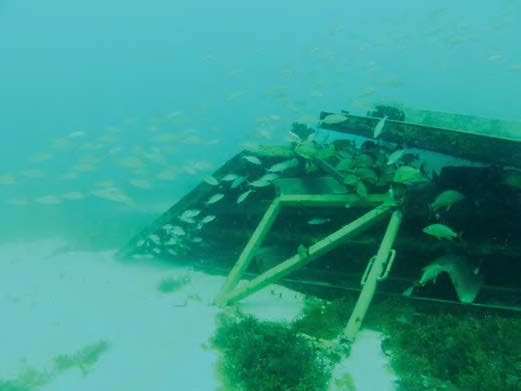Guillaume Montagne, an intern at the Réserve from April through August 2018, made an oral report on the results of his internship for his professors at the Université de Calais (ULCO), where he just got his degree in the management of property and personnel, natural hazards, and the management of urban spaces. In charge of the planning stages, conception, implantation of BIOHAB2, he followed the evolution of this artificial habitat located near the Remorqueur dive site, off the coast of de Tintamare. One month after the immersion of the structures, a dive afforded the observation that the number of individuals per species was well superior to that observed by BIOHAB1, which disappeared with hurricane Irma. The data is still being sorted, but Julien Chalifour suspects that this abundance is due, in part, to size of the new installation and in addition, the proximity to Remorqueur, a site already over-populated. Schools of young pigfish were seen here alongside young surgeonfish, butterfly fish, and angelfish, as well as young royal lobsters. A month later, a second dive revealed an augmentation of all these populations and the incorporation of new species as well. The first successes recorded for BIOHAB2 was broadcast by IoTV, a local channel, and will be showcased on Thalassa early next year, on a program dedicated to Saint Martin and climate change (see article page 6).
Big success for BIOHAB2
BIOHAB2 © Julien Chalifour

















